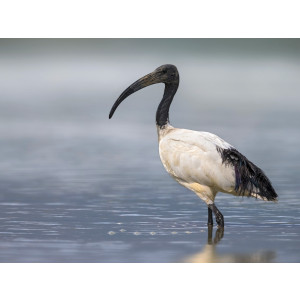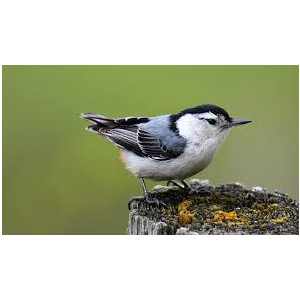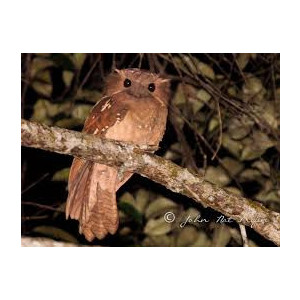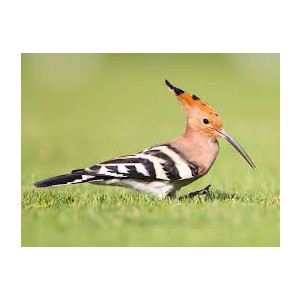Intermediate (Yellow-billed) Egret Did you see this animal?
Scientific Name : Ardea intermedia
Family : Ardeidae
Order : Pelecaniformes
Class : Aves
Phylum : Chordata
Other Name : Yellow-billed Egret, Smaller Egret, Plumed Egret, Median Egret
Habitat : Wetlands
Description : The Yellow-billed Egret is a long-legged white wading bird with dusky black legs and feet (adult bird length approximately 45 cm, weight 900 g, wing 32 cm, bill 8.5 cm, tarsus 13.5 cm, tail 12.5 cm). The male is a little larger than the female. It looks white overall. It feeds on fish, frogs, molluscs and aquatic insects. The intermediate egret is a skilled predator that stalks its prey methodically in shallow coastal or freshwater habitats, including flooded fields. Its diet consists of fish, frogs, crustaceans, and insects. This egret often forms nesting colonies with other herons, typically constructing stick platforms in trees or shrubs. Clutches usually contain 2 or 3 eggs, but occasionally there can be as many as 6 eggs. The eggs have a pale green color and a smooth, slightly pitted shell.
Both parents take turns incubating the eggs, which hatch after a period of 24 to 27 days. The eggs hatch asynchronously, and once hatched, the adults care for the semi-altricial young for about 12 days. They diligently defend the nests from aerial predators during both incubation and brooding, assuming a protective posture by crouching over the nest, raising their plumes, and pointing their bills towards potential threats.
The parents regurgitate food to feed the young, initially depositing it onto the floor of the nest. As the chicks grow, they learn to take food directly from their parents' mouths. Within the brood, there may be competition for food. Pinfeathers start to appear on the chicks as early as 4 days old, and they are capable of leaving the nest at 24 days, although they continue to return to be fed. Fledging occurs at around 40 days old, and the chicks leave the colony after approximately 70 days.
Intermediate egret populations show varying levels of breeding success, with higher success rates reported during wet years compared to dry years. In Africa and Australia, they have been observed to be quite successful breeders, with 96% and 88% of nests, respectively, fledging at least one chick.
Both parents take turns incubating the eggs, which hatch after a period of 24 to 27 days. The eggs hatch asynchronously, and once hatched, the adults care for the semi-altricial young for about 12 days. They diligently defend the nests from aerial predators during both incubation and brooding, assuming a protective posture by crouching over the nest, raising their plumes, and pointing their bills towards potential threats.
The parents regurgitate food to feed the young, initially depositing it onto the floor of the nest. As the chicks grow, they learn to take food directly from their parents' mouths. Within the brood, there may be competition for food. Pinfeathers start to appear on the chicks as early as 4 days old, and they are capable of leaving the nest at 24 days, although they continue to return to be fed. Fledging occurs at around 40 days old, and the chicks leave the colony after approximately 70 days.
Intermediate egret populations show varying levels of breeding success, with higher success rates reported during wet years compared to dry years. In Africa and Australia, they have been observed to be quite successful breeders, with 96% and 88% of nests, respectively, fledging at least one chick.
Distribution in Bangladesh
References:
description written by:Fatema-Tuz-Zohora,Department of Zoology, Jagannath University,Dhaka;information source: Encyclopedia of Flora and Fauna of Bangladesh, Vol-26, iucnredlist.org;Photo credit and copyright:MSH Sourav (TU Dresden, Germany);taxonomic checklist:P. M. Thompson and S. U. Chowdhury (2020). A checklist of birds of Bangladesh.Birds Bangladesh;bird song owner:Peter Boesman(www.xeno-canto.org/Peter Boesman), bird sound copyright reserved according to www.xeno-canto.org rules; more information, please contact us.
description written by:Fatema-Tuz-Zohora,Department of Zoology, Jagannath University,Dhaka;information source: Encyclopedia of Flora and Fauna of Bangladesh, Vol-26, iucnredlist.org;Photo credit and copyright:MSH Sourav (TU Dresden, Germany);taxonomic checklist:P. M. Thompson and S. U. Chowdhury (2020). A checklist of birds of Bangladesh.Birds Bangladesh;bird song owner:Peter Boesman(www.xeno-canto.org/Peter Boesman), bird sound copyright reserved according to www.xeno-canto.org rules; more information, please contact us.



















































































